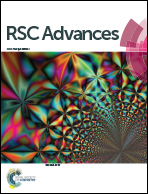An Ni–P/C electro-catalyst with improved activity for the carbohydrazide oxidation reaction†
Abstract
Ni–P/C nanoparticles (NPs) were prepared through a two-step liquid phase reduction method, which exhibited a significant enhancement for electro-catalytic activity towards the carbohydrazide oxidation reaction compared with Ni/C NPs. The proposed mechanism of the enhanced activity can be attributed to the improved anti-oxidation ability of Ni atoms and the charge transfer from Ni to P atoms in the catalysts.


 Please wait while we load your content...
Please wait while we load your content...